Contents
Fertilization is a mandatory agrotechnical measure for gardeners who want to harvest a good crop of cabbage. Those who for some reason refuse to use chemicals use folk remedies, such as yeast, for this. However, even such “harmless” products, if used improperly, can harm the culture. Therefore, if you are going to feed the cabbage with yeast, you need to know in advance how to properly prepare the solution, at what stages of the growing season and how many times per season to apply fertilizers.
Is it possible to feed cabbage with yeast
Yeast is an almost universal top dressing for horticultural crops, only potatoes, onions and garlic react negatively to it. But for cabbage, such a fertilizer, on the contrary, is very suitable, as well as for other Solanaceae, any root crops. Therefore, it is definitely possible to feed it with yeast.
Although, from the point of view of specialists in the field of agronomy, this is not a fertilizer. The positive effect is due to the presence of saccharomyces fungi – a natural “catalyst” of the processes of decomposition of organic substances. As a result, after such top dressing, the quality of the substrate in the garden with cabbage improves significantly. And this, in turn, stimulates the development of plants, they absorb more minerals, which has a positive effect on the volume and quality of the crop.
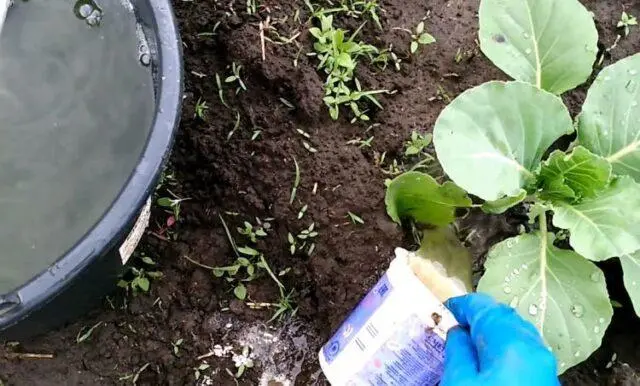
The experience of gardeners convincingly proves that “it grows by leaps and bounds” is by no means a figurative expression
The benefits of yeast for cabbage
One of the undoubted advantages of this cabbage dressing in the eyes of gardeners is environmental safety. For the culture itself, its benefits are as follows:
- Yeast is a valuable source of protein compounds, as well as carbohydrates, B vitamins. Therefore, after such top dressing, the process of plant development is noticeably activated. Heads of cabbage ripen faster for a week and a half, they turn out to be very dense, but at the same time tender and juicy. And this leads to an improvement in taste and greater keeping quality.
- Top dressing activates the work of beneficial soil microflora, “responsible” for the decomposition of organic matter. Plants can “pull” more nutrients out of the soil. This has a positive effect on overall endurance, productivity.
- Yeast “inhibits” pathogens, which significantly reduces the risk of developing diseases to which the culture is very susceptible. Watering cabbage with yeast is also useful for protecting against pests.
- Dissolving in water, they form compounds that stimulate the growth of the root system. It not only ensures the active development of the plant, but also helps it recover from negative external influences.
- When top dressing at the seedling stage, seedlings quickly adapt to the changed habitat after transplanting into open ground and start growing.
Using yeast as a fertilizer for cabbage, you need to take into account that the rapid rate of decomposition of organic matter in the soil is useful, but only in the current season. The next year, it is necessary to “fill up” the resulting nutrient deficiency, otherwise nothing will grow on such depleted soil.
Another important nuance is that with regular yeast feeding of cabbage, the content of potassium and calcium in the soil gradually decreases. In order to “neutralize” such an influence, it is necessary to apply suitable fertilizers 2-3 times per season.
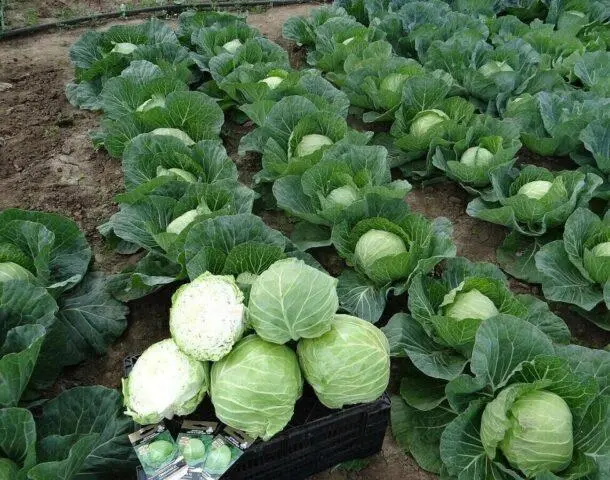
With proper use, yeast fertilizer is completely safe for human health and the environment.
Types of Yeast
Yeast are:
- bakery;
- wine;
- beer;
- fodder.
Any kind is suitable for feeding cabbage, but gardeners most often use the first. They, in turn, are divided into liquid, “live” pressed and instant dry. Liquid in the “open access” is almost never found, but dry and pressed can be purchased at any grocery store at an affordable price. Therefore, it is they who become the “raw materials” for feeding cabbage and other horticultural crops.
Terms and frequency of processing
The fungi contained in the yeast “activate” only in sufficiently warm (from 10 ° C) soil. Otherwise, they simply die. Therefore, it is impossible to rush with such dressings. Fertilizers are applied from the end of spring, in some regions you even have to wait until mid-June.
For early and mid-season varieties of cabbage, two dressings per season are enough. The first is carried out about a month after transplanting the seedlings into the ground, the second – after another 25-35 days. Medium-late and late varieties, especially if the plants are lagging behind in development, need a third top dressing – about 2-3 weeks before the end of the head ripening period indicated in the description of the variety or hybrid.
Transplanted cabbage seedlings can be fed with yeast in a foliar way, reducing the concentration of the solution by 1,5 times compared to the recommended one. Further, the bushes are fertilized by watering under the root.
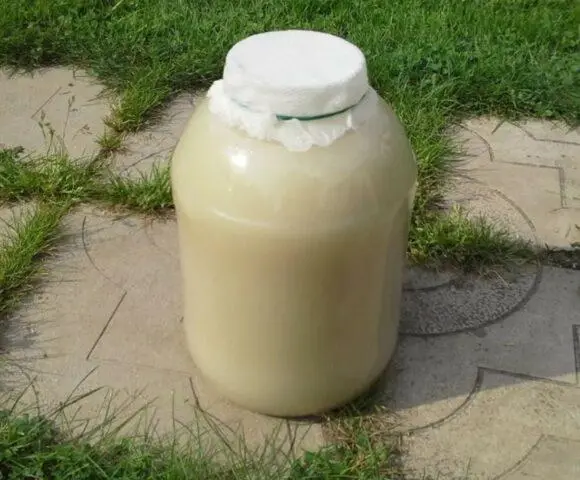
The norm for the first time is about 0,5 liters of solution, then it increases to 1,5-2 liters
It is strongly not recommended to abuse top dressing, otherwise the effect will be the opposite of what you want. An excess of yeast and their metabolic products in the soil inhibits the immunity of cabbage and other plants.
How to prepare a solution with yeast for feeding cabbage
Regardless of which yeast is chosen to feed the cabbage, it must be remembered that oxygen is needed to “activate” them. Therefore, the container in which the solution is prepared must not be hermetically sealed. It is impossible to specify exactly how the process will stretch – it mainly depends on the ambient temperature.
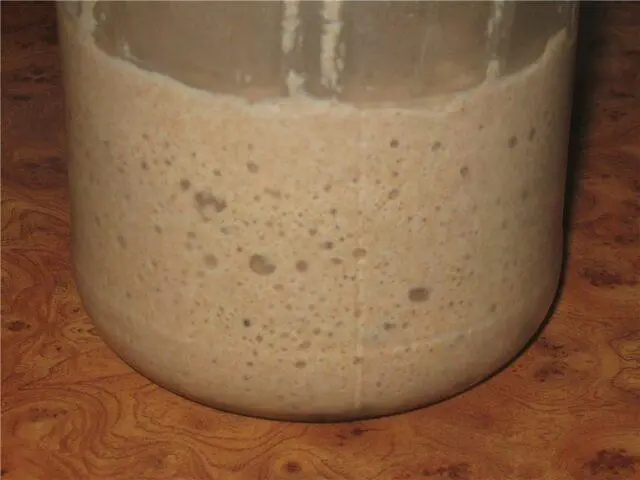
When determining whether the fertilizer is ready, it is recommended to focus on the bubbles that appear on the surface of the liquid.
Dry yeast
Ingredients of the “basic” top dressing for cabbage:
- water – 10 l;
- dry yeast – 150 g;
- granulated sugar – 80
To prepare the fertilizer, it is enough to mix all the components, preheating the water to about 40 ° C. The container is covered with gauze or cloth, left warm for fermentation for 3-6 hours until ready. Then they filter, pour another 10 liters of water into the “sourdough”, again let it brew for 2-3 days.
If the solution is necessary for the root feeding of cabbage, it is not diluted with water. For spraying leaves, the concentration is reduced by diluting in a ratio of 1:3 or 1:4, depending on the age of the plants.
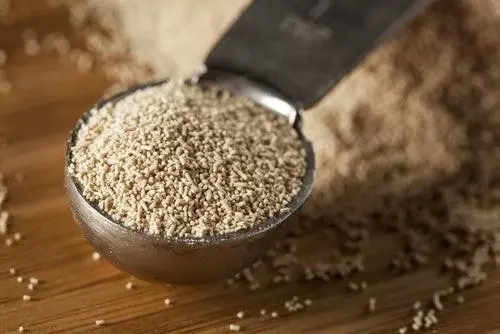
The main advantage of dry yeast compared to raw yeast is hermetic packaging, which minimizes the risk of spoilage during storage.
raw yeast
Pressed yeast in briquettes is “activated” on its own, for this they do not need sugar. Therefore, the composition of top dressing for cabbage includes only:
- water – 5 l;
- pressed yeast – 1 kg.
To prepare top dressing, yeast is added to a container with warm water and intensively stirred until the briquettes are dissolved. To speed up the process, they can be pre-cut into small pieces. The liquid is left to “ferment” for 6-10 hours, then stirred again, pour in 10 liters of water. The fertilizer is ready for use in two days.
To feed cabbage seedlings, a less concentrated solution is prepared – 10 g per liter. The liquid is insisted for a day, filtered before use.

Pressed yeast without freezing is stored for a short time – up to 7-10 days
Application of yeast with other fertilizers
Yeast is successfully “combined” with most other folk remedies and store-bought preparations used to feed cabbage. In any case, it’s impossible to get by with them – it is necessary to compensate for the emerging deficiency of organic matter, potassium and calcium.
With ash
Wood ash is a universal folk remedy suitable for feeding any garden crops. It contains potassium, calcium, magnesium, sulfur, phosphorus, zinc. All these macro- and microelements are necessary for the normal growth and development of cabbage. In combination with yeast, wood ash activates the process of head formation, so this top dressing is especially in demand when growing medium-late and late-ripening varieties.
To prepare top dressing you need:
- Add 10 g of sifted wood ash and 300 g of dry yeast to 100 liters of water. Mix well.
- Bring to a boil, cook over low heat for 15-20 minutes.
- Leave for 2-3 hours, shaking occasionally.
- Strain, add another 10 liters of water, mix. If the solution is planned to be used for foliar feeding, you can add a little small shavings of laundry soap so that it “sticks” better to the cabbage leaves.
Another dressing recipe:
- Pour a glass of sifted wood ash, 100 g of sugar and pressed yeast with water (3 l). Stir vigorously for 2-3 minutes.
- Cover with a cloth on top, leave in a warm place for about 3-4 days.
- Strain before use, dilute with water 1:5.
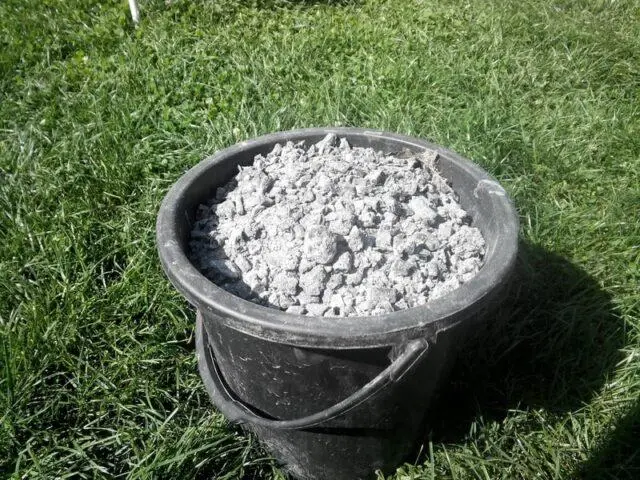
For top dressing use only “environmentally friendly” ash
With boric acid
With a boron deficiency, cabbage heads are tied up very poorly, they turn out to be “loose”, which negatively affects the keeping quality. Top dressing with boric acid and yeast can be used both for watering bushes and for spraying leaves.
How to prepare a solution to pour cabbage with yeast with boric acid:
- Heat 5 l of water to 40 ° C, add boric acid (1 g) and pressed yeast (200 g). Mix well.
- Infuse for 2-3 hours, strain before use.
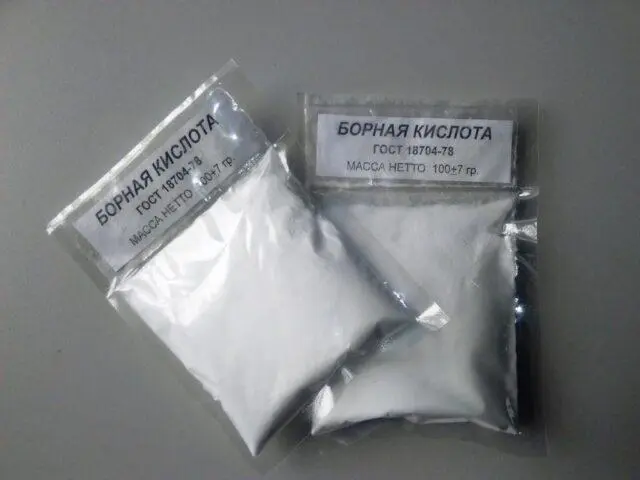
Boric acid provides cabbage leaves with juiciness and a pronounced crunch.
with jam
Feeding cabbage with yeast in combination with fermented jam activates the growth process of the aerial part, has a beneficial effect on immunity and overall endurance.
The recipe is simple:
- Pour 3 g of dry yeast into 100 liters of jam, mix well.
- Add 10 liters of water. Leave warm for a week and a half, shaking daily.
- Before use, strain, dilute with water (a glass of solution for 10 liters).
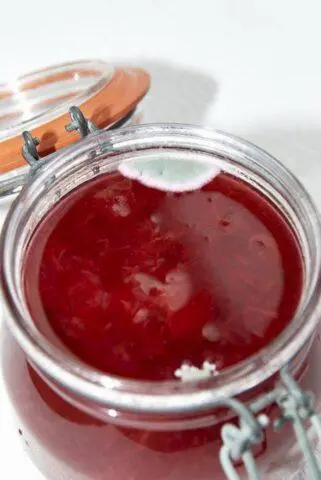
For dressing cabbage, you can even use moldy jam, after removing the resulting “plaque”
Conclusion
If several times during the season you feed the cabbage with yeast at the right time, having properly prepared the solution, this helps to increase the overall plant endurance, including resistance to pests and pathogenic microflora, and improves soil quality. This fertilizer also has a positive effect on the quality of heads of cabbage – they become more juicy and crispy.









